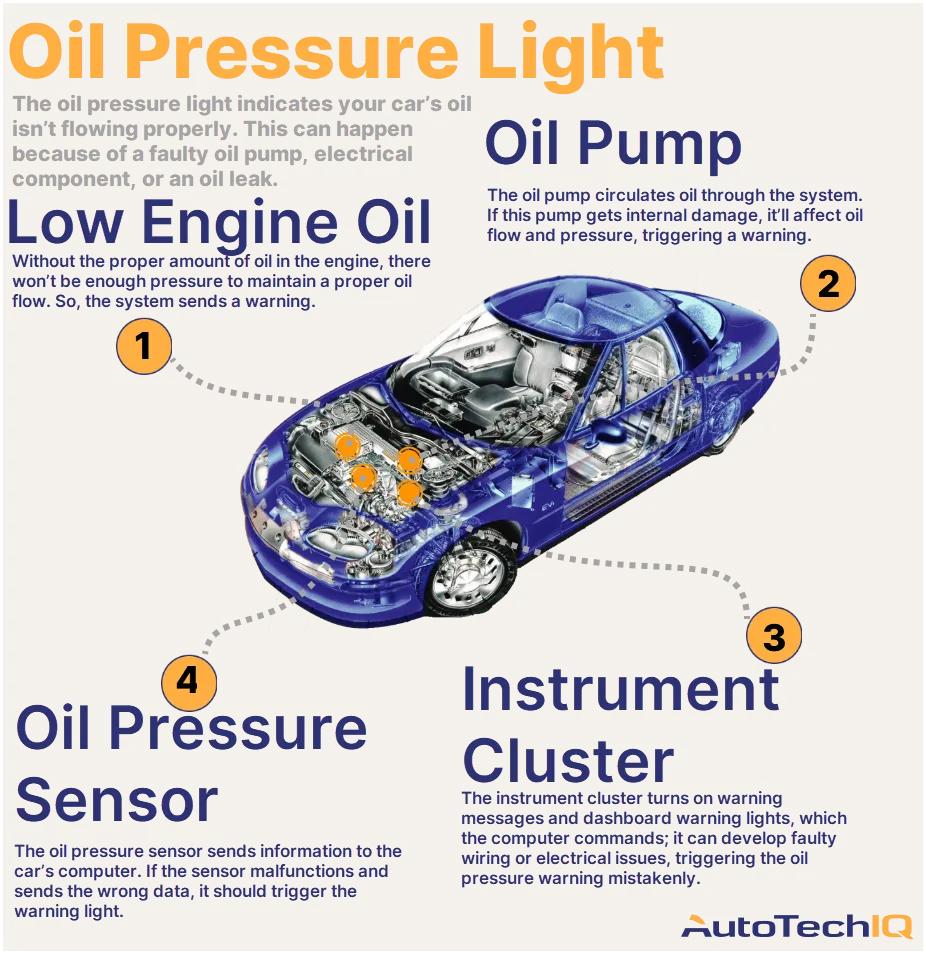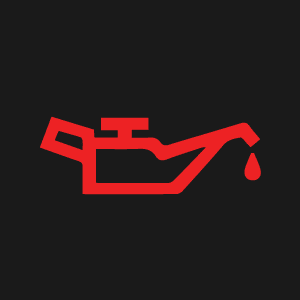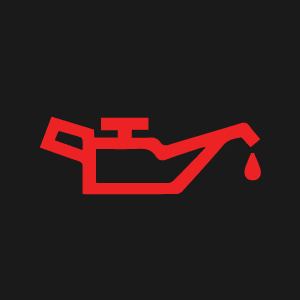Your low oil light may be on even if the oil is full due to issues like a faulty oil pump or clogged filter. This discrepancy can signal various problems within your vehicle’s oil system, necessitating a thorough inspection by a professional mechanic.
It is crucial to address this issue promptly to prevent potential damage to your engine and ensure optimal vehicle performance. Remember, even though the oil level appears adequate, underlying issues could be causing the low oil light to illuminate. Be proactive in addressing this warning to maintain the health and functionality of your vehicle.
Low Oil Light Mysteries
False Alarms: Understanding The Sensor
If you find yourself puzzled by the low oil light coming on despite the oil level being full, you’re not alone. It’s a common issue that can leave car owners scratching their heads. One possible explanation for this phenomenon is a false alarm triggered by the oil pressure sensor. This sensor is designed to detect a drop in oil pressure, which could indicate a potential problem. However, it can sometimes send a signal when there is no actual drop in pressure, leading to the illumination of the low oil light.
Oil Level Vs. Oil Pressure: Key Differences
It’s important to understand the distinction between oil level and oil pressure when diagnosing the low oil light mystery. The oil level refers to the quantity of oil in the engine, which can be checked using the dipstick. On the other hand, oil pressure relates to the force with which the oil is circulated through the engine. A drop in oil pressure can be caused by various factors, such as a clogged oil filter, worn-out oil pump, or blocked oil passages. While the oil level may be sufficient, a decrease in oil pressure could still trigger the low oil light.

Credit: www.vwofkearnymesa.com
Common Culprits Behind The Warning
The low oil light can come on even when the oil level is full due to issues such as a faulty oil pressure sensor, clogged oil filter, or worn engine parts. These culprits can trigger the warning and should be addressed promptly to avoid potential engine damage.
Common Culprits Behind the Warning You are driving down the road and suddenly notice the oil warning light illuminated on your dashboard. You immediately check the oil level, only to find that it’s full. Now, you may be wondering what could be causing the low oil light to come on even when the oil level is full. There are several reasons why this might happen, and we will explore the common culprits behind the warning in this article. Malfunctioning Oil Pump: A Prime Suspect One of the most common reasons why the low oil light comes on even when the oil level is full is a malfunctioning oil pump. The oil pump is responsible for circulating oil throughout the engine, and if it’s not working correctly, the oil pressure may drop, triggering the warning light. A worn-out or damaged oil pump can also cause low oil pressure, leading to engine damage over time. In such cases, it’s advisable to get your vehicle checked by a qualified mechanic to replace the faulty oil pump. Clogged Filters and Passages: The Silent Villains Another common culprit behind the low oil light warning is clogged filters and passages. Over time, dirt, debris, and sludge can accumulate in the oil filter and passages, restricting the flow of oil to the engine, leading to low oil pressure. This can cause significant damage to the engine if not addressed promptly. Regular oil changes and maintenance can help prevent clogging of filters and passages. If the warning light persists, it’s best to seek professional help to clean or replace the clogged filters and passages. In conclusion, if the low oil light comes on, even when the oil level is full, it’s essential to address the issue immediately to avoid potential damage to your engine. Malfunctioning oil pumps and clogged filters and passages are the common culprits behind the warning, and regular maintenance can help prevent such issues. If the warning light persists, it’s best to seek professional help to diagnose and fix the problem.Sensor Failures And Solutions
One common reason for the low oil light to come on despite the oil being full is a faulty oil pressure sensor. This sensor is responsible for monitoring the oil pressure in the engine. When it malfunctions, it can trigger the low oil light inaccurately.
To address sensor issues, you can try resetting the oil pressure sensor. This process can sometimes resolve minor sensor glitches. If resetting doesn’t work, replacing the faulty sensor with a new one is the best solution to ensure accurate oil pressure readings.

Credit: www.autotechiq.com
The Role Of Oil Quality
Degraded Oil: A Hidden Trouble
Over time, oil degrades due to exposure to high temperatures and contaminants, leading to a reduction in viscosity and lubricating properties. This degradation can trigger the low oil light even when the oil level is full. Additionally, degraded oil may fail to maintain proper oil pressure, causing the warning light to illuminate.
Regular Oil Changes: Preventive Measures
Schedule regular oil changes to ensure that the oil maintains its optimal viscosity and lubricating capabilities. By adhering to the recommended oil change intervals, you can prevent the onset of degraded oil and maintain the proper oil pressure in your vehicle. This preventive measure can contribute to the longevity and health of your engine, and help prevent the low oil light from activating unnecessarily.
Mechanical Wear And Tear
When it comes to understanding why your low oil light is on despite the oil being full, it’s crucial to consider the impact of mechanical wear and tear. This issue can arise due to various factors, leading to potential engine complications and necessitating immediate attention.
Engine Parts Deterioration: A Gradual Effect
Over time, engine parts such as pistons, bearings, and cylinders can undergo wear and tear, causing a decrease in oil pressure. This gradual deterioration may not be immediately noticeable but can lead to the low oil light triggering despite the oil level being adequate.
Worn Out Engine: Recognizing The Signs
Recognizing signs of a worn-out engine is crucial in addressing the low oil light issue. Symptoms may include knocking sounds, decreased performance, and visible smoke from the exhaust. These indicators suggest potential internal damage and the need for immediate inspection and maintenance.
Diagnostic Steps To Take
If your low oil light is on but the oil is full, check for potential issues like a faulty oil pump, clogged oil filter, or damaged pressure sensor. Ensure to investigate promptly to avoid engine damage.
Diagnostic Steps to Take If your low oil light is on but the oil level is full, there are specific steps you can take to diagnose the issue. How to Check Oil Pressure Manually To manually check oil pressure, follow these steps: 1. Locate the Oil Pressure Gauge: Find the oil pressure gauge on your vehicle’s dashboard. 2. Warm Up the Engine: Ensure the engine is warm before checking the oil pressure. 3. Use a Manual Oil Pressure Gauge: Connect a manual oil pressure gauge to the engine. 4. Check the Reading: Start the engine and observe the oil pressure reading on the gauge. Professional Diagnostic Tools and Techniques Professional mechanics may use advanced tools and techniques to diagnose the issue: – Scan Tools: Utilize scan tools to access the vehicle’s computer system for error codes. – Oil Pressure Test Kit: Perform an oil pressure test using specialized tools to get accurate readings. – Visual Inspection: Conduct a visual inspection to check for leaks, clogs, or other issues. By following these diagnostic steps, you can pinpoint the cause of the low oil light being on despite the oil level being full.Immediate Actions And Safety
If your low oil light is on but the oil is full, immediate actions and safety are crucial. This issue could be due to a faulty oil pressure sensor, clogged oil filter, or worn engine parts, signaling potential engine problems that need attention.
Regular maintenance and professional inspection are recommended to ensure safe driving.
When To Stop Driving: Assessing Risks
If your low oil light is on but the oil is full, you may be wondering if it’s safe to continue driving. The answer depends on the cause of the issue and the severity of the problem. If the oil pressure is low, continuing to drive can cause significant damage to your engine. It’s important to pull over as soon as possible and assess the situation. Check the oil level and look for any signs of oil leaks. If the oil level is low or there are leaks, it’s best to avoid driving until the issue is resolved. If the oil level is fine and there are no visible leaks, the problem may be related to the oil pressure sensor or gauge. In this case, it may be safe to continue driving, but it’s still important to have the issue diagnosed and repaired as soon as possible.Temporary Fixes Vs. Long-term Solutions
If you’ve determined that it’s safe to continue driving, you may be wondering if there are any temporary fixes you can try. While it’s possible to add oil to the engine to temporarily raise the oil pressure, this is not a long-term solution. It’s important to address the underlying issue to avoid further damage to your engine. This may involve replacing a faulty oil pressure sensor, cleaning or replacing a clogged oil filter, or repairing a damaged oil pump. In some cases, the issue may be related to wear and tear on engine parts. While this can be a more costly repair, it’s important to address the issue to avoid more serious problems down the line. Remember, the safety of you and your passengers is the top priority. If you’re unsure about the safety of continuing to drive with a low oil light on, it’s best to err on the side of caution and have your vehicle inspected by a qualified mechanic.Preventive Strategies And Maintenance
When faced with the confusing situation of the low oil light being on despite the oil level being full, it’s essential to implement preventive strategies and maintenance routines to ensure the optimal performance and longevity of your vehicle.
Routine Check-ups: Staying Ahead
Regular maintenance check-ups play a crucial role in detecting potential issues before they escalate into major problems. By scheduling routine inspections, you can stay ahead of any underlying issues that may trigger the low oil light despite the oil being full.
During these check-ups, professional mechanics can thoroughly examine the oil system, including the oil pump, oil filter, and oil passages, to identify any obstructions or malfunctions that could lead to erroneous low oil warnings.
Additionally, routine oil changes are vital to maintain the quality and effectiveness of the engine oil. Over time, oil can degrade and lose its viscosity, potentially triggering false low oil indications. By adhering to a consistent oil change schedule, you can mitigate the risk of encountering misleading low oil alerts.
Educating Drivers: Knowledge As Power
Empowering drivers with knowledge about the intricacies of their vehicle’s oil system is a proactive approach to preventing unwarranted low oil warnings. Understanding the potential causes and remedies for this issue can enable drivers to take preemptive measures and seek professional assistance promptly.
Drivers should be aware of the significance of maintaining the proper oil level, monitoring for oil leaks, and recognizing the symptoms of a faulty oil pressure sensor. By being well-informed, drivers can promptly address any anomalies related to the oil system, mitigating the risk of encountering misleading low oil alerts.

Credit: www.reddit.com
Frequently Asked Questions
Why Would The Oil Light Come On If The Oil Is Full?
The oil light can come on due to a faulty oil pump, clogged oil filter, or damaged pressure sensor, even if the oil level is full.
Why Does My Car Say Engine Oil Low But Oil Is Full?
The car may show low oil warning due to issues like faulty oil pump or clogged filter, even with full oil.
What Causes Low Oil Pressure When Oil Is Full?
Low oil pressure when oil is full can be caused by a faulty oil pump, clogged oil filter, worn engine parts, or a damaged pressure sensor. It can also result from dirty oil, restricted oil passages, or low oil level.
Regular maintenance and addressing these issues promptly can help restore proper oil pressure.
How To Reset An Oil Pressure Sensor?
To reset an oil pressure sensor, locate the sensor and disconnect its electrical connector. Wait for a few minutes before reconnecting the sensor. Start the engine and check if the light has reset. If not, consult a professional mechanic for further assistance.
Conclusion
If your low oil light is on but the oil is full, various factors could be at play. These include a faulty oil pump, clogged oil filter, or damaged pressure sensor. It’s crucial to address the issue promptly to prevent potential engine damage.
Regular maintenance is key.


